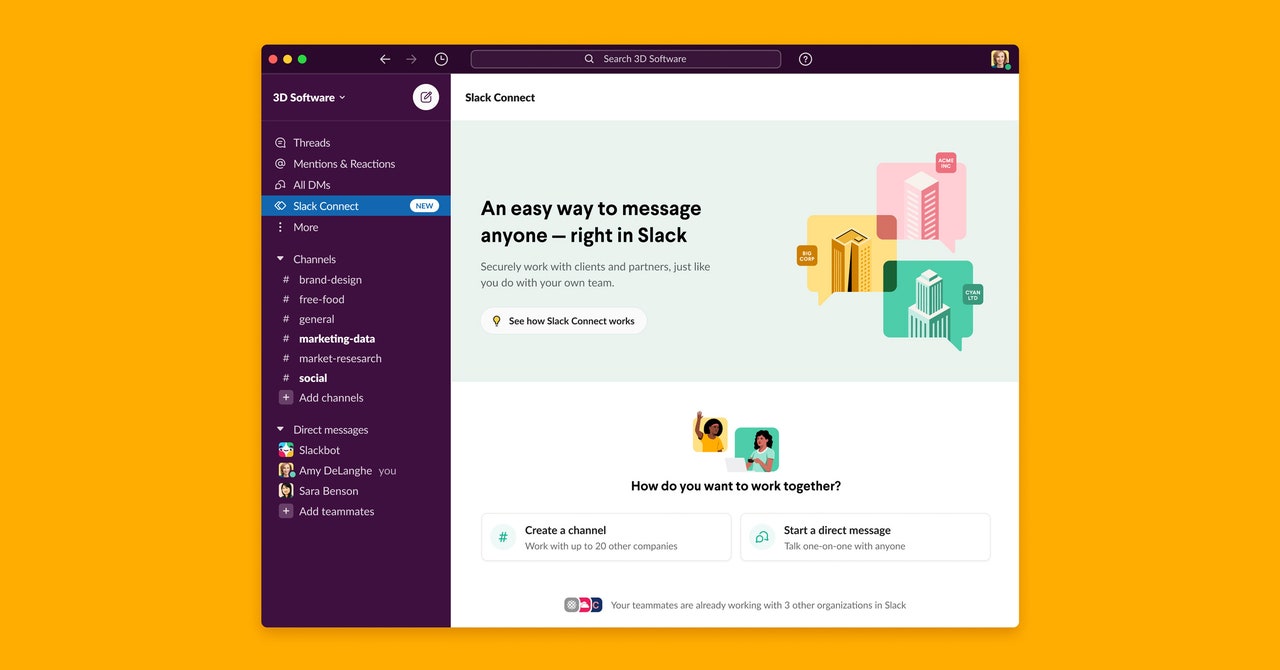Slack Now Lets You DM Anyone. So Long, Work-Life Balance

“When someone opens up their phone,” Frank told Protocol, “if they’re connecting with their friends, they click on Facebook or WhatsApp. If they’re connecting with someone they work with, regardless of where that person works, they should be clicking on Slack.” (Note the comparison to social media here.)
Slack users and pundits often refer to the application as an email killer, and a feature like Slack Connect seems like it would be yet another nail in the email coffin. It’s probably not. I say this not because email is good—I have more than 23,000 unread emails, and that is not a humblebrag, it is a cry for help—but because Slack chats and email still have such fundamental differences.
David Heinemeier Hansson, who created Ruby on Rails, cofounded the productivity software company Basecamp, and rarely misses an opportunity to extoll the benefits of Basecamp’s email product, rattled off a few of these differentiators to WIRED: “Chat is real-time, staccato thinking. Email is asynchronous, considered thinking. Email is a protocol. You don’t lose your contact book because you change systems. Everyone has email.”
Arguably the worst thing about something like Slack chat is that it’s “yet another platform,” Heinemeier Hansson says. “The last thing the world needs is yet another proprietary protocol that will lock in a social graph to a single company.”
The structure of email can support a more considerate experience (especially in a pandemic). But slacks or texts can be considered, too. So the more important question may be whether Slack Connect is good for chat, and what constitutes a good chat application in the year 2021. The first and perhaps most obvious characteristic of a good chat app is an airtight approach to privacy and security. Slack doesn’t offer end-to-end encryption; organizations currently can’t be verified as official businesses on the platform, which seems more important now that people from other orgs can send messages; and, well, there’s the initial snafu of allowing people to send potentially harmful message attachments in DM requests. Also, sorry folks: Employers can read your Slack DMs, despite how private they may seem.
Slack Connect in action.
Video: Slack
The next consideration is what kind of communication the chat actually enables. Slack’s cascade of real-time updates, its threading features, its programmable bots, and even the smorgasbord of emoji and GIFs are as much a part of the app’s appeal as they are potential distractions. Microsoft’s Office apps are vegetables; Slack is candy. But candy, of course, isn’t necessarily good for you. Anne Helen Peterson, a former media studies researcher who now writes a Substack newsletter on internet culture, has noted in the past that Slack has become a way to LARP our jobs—that’s live-action role play—and is one of many work apps that contributes to “slippage” between our work lives and personal lives.
